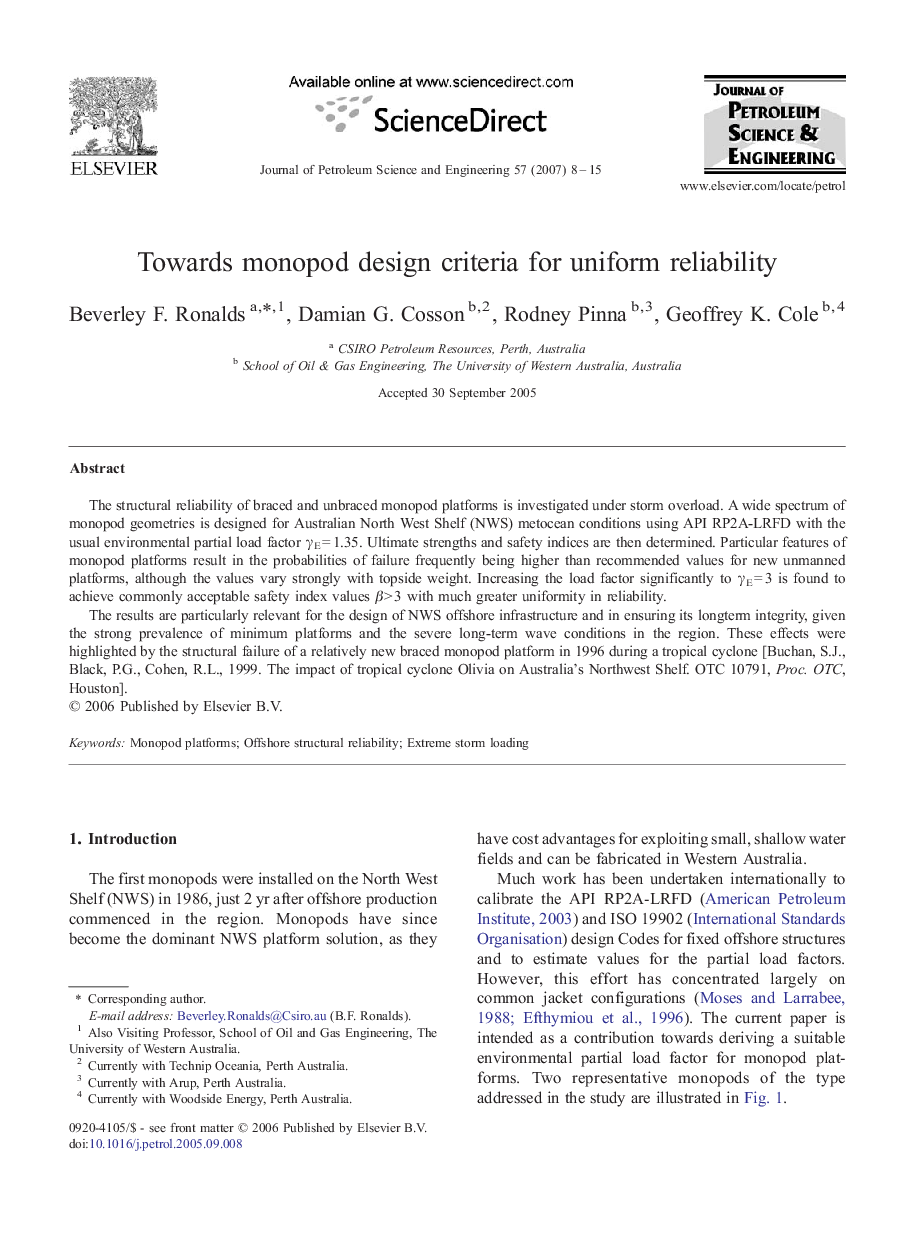| Article ID | Journal | Published Year | Pages | File Type |
|---|---|---|---|---|
| 1756519 | Journal of Petroleum Science and Engineering | 2007 | 8 Pages |
The structural reliability of braced and unbraced monopod platforms is investigated under storm overload. A wide spectrum of monopod geometries is designed for Australian North West Shelf (NWS) metocean conditions using API RP2A-LRFD with the usual environmental partial load factor γE = 1.35. Ultimate strengths and safety indices are then determined. Particular features of monopod platforms result in the probabilities of failure frequently being higher than recommended values for new unmanned platforms, although the values vary strongly with topside weight. Increasing the load factor significantly to γE = 3 is found to achieve commonly acceptable safety index values β > 3 with much greater uniformity in reliability.The results are particularly relevant for the design of NWS offshore infrastructure and in ensuring its longterm integrity, given the strong prevalence of minimum platforms and the severe long-term wave conditions in the region. These effects were highlighted by the structural failure of a relatively new braced monopod platform in 1996 during a tropical cyclone [Buchan, S.J., Black, P.G., Cohen, R.L., 1999. The impact of tropical cyclone Olivia on Australia's Northwest Shelf. OTC 10791, Proc. OTC, Houston].
